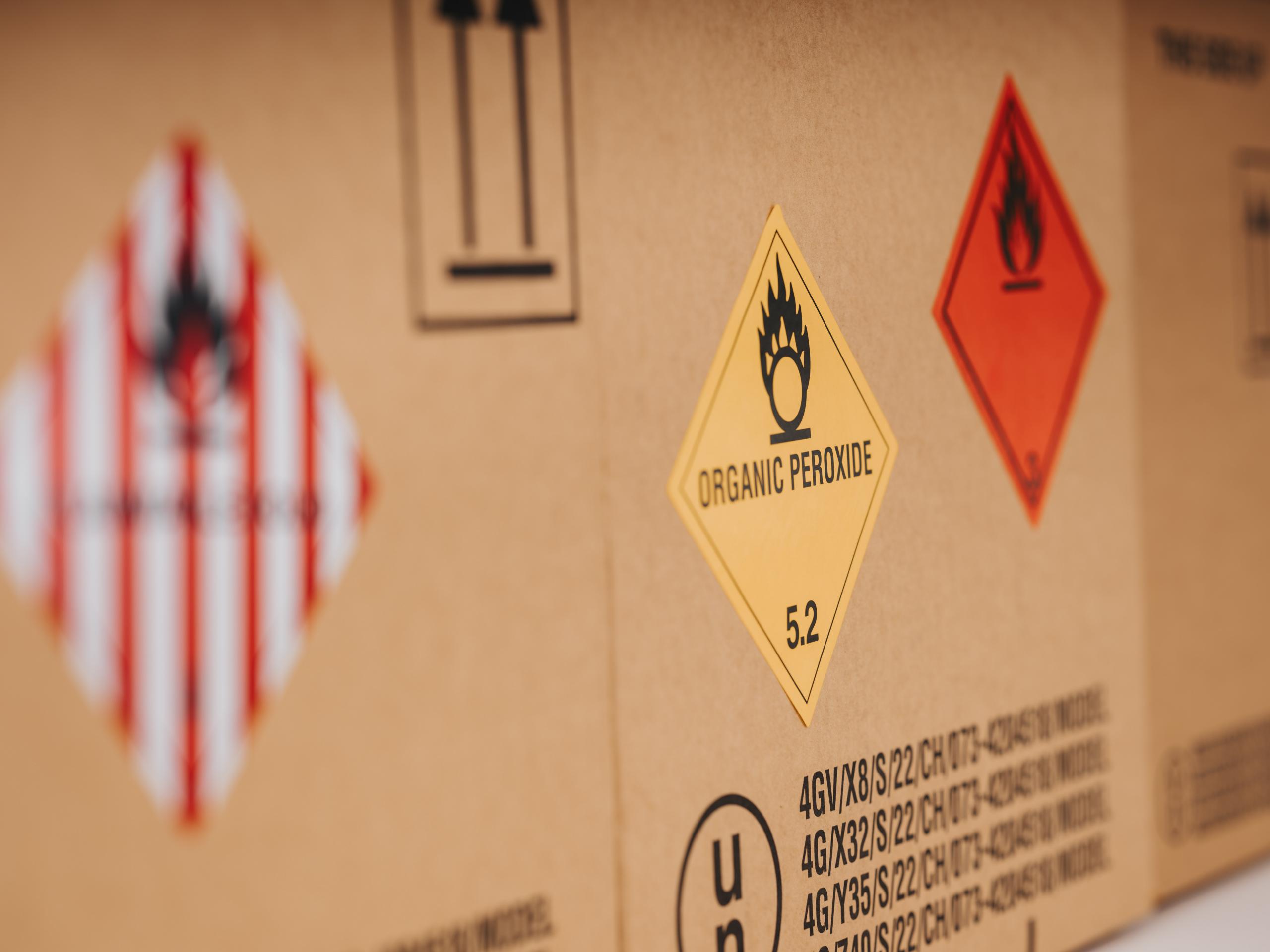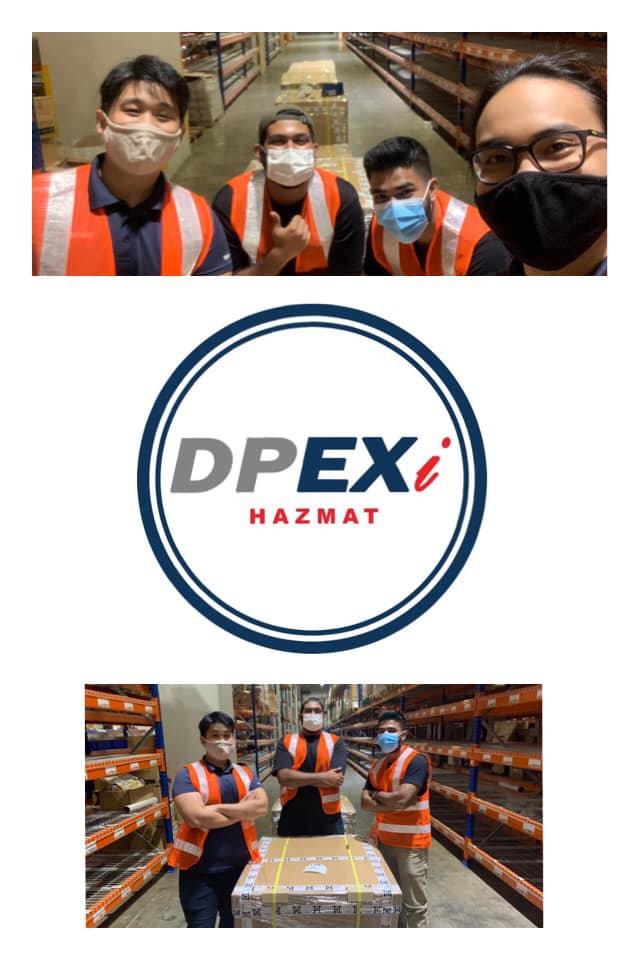Dangerous Goods Services
Moving your Dangerous Goods (DG) by air, sea or land is not like moving general goods.
Preparing for your DG Shipment
In other words, for DG shipments, it isn’t as straightforward as placing an item in a box, placing a delivery label on it, and shipping it out. Instead, one must take into consideration the Dangerous Goods safety regulations and requirements based on the content of the shipment involved.
The full process of shipping DG items involves a lot of preparation – from packing the items properly with ample space and proper mitigation factors to using the right UN boxes for shipping, to ensuring the right documents are prepared (DG Checklist, Dangerous Goods Declaration Form, etc.) to using only suitable transportation modes that meet the DG item requirements.
Shipments that are packed and sent with incorrect packaging, documentation, marks, and labels will cause rejections, delays, and incur additional costs.
All in all, the team preparing these items MUST have a full understanding of the relevant regulations in place for each DG shipment and are licensed to carry out the duties.
Packing and Declaration
As the shipper, it is your responsibility to ensure Dangerous Goods are correctly packaged, declared, and labeled with the right documentation and proper transportation services as they travel from the country of origin, to the transiting country and to the country of destination.
Extra Surchages Involved
Shipping Dangerous Goods requires special transportation and handling services to ensure maximum safety.
Due to this, extra charges will be added to your shipping costs.

common DGs
imported or exported to and from Singapore
The following are some of the most common dangerous goods imported and exported in Singapore:
Paints
Mercury
Biological specimen
Bleach
Car batteries
Pesticides
Flares
Lighter liquid
Fireworks
Camping gas
Your Shipment,
Your Responsibility.
Classifications of Dangerous Goods
Class 1 - Explosives
These are items or materials that can detonate or conflagrate rapidly as a consequence of chemical reactions.
Division 1.1: articles and substances with mass explosion hazard
Division 1.2: articles and substances with hazard but without mass explosion hazard
Division 1.3: articles and substances with a fire hazard. It can either have a minor projection hazard or a minor blast hazard but without a mass explosion hazard
Division 1.4: articles and substances that do not present any significant hazard
Division 1.5: substances that are very sensitive and those with a mass explosion hazard
Division 1.6: articles that are extremely sensitive but with no mass explosion hazard
Examples of Explosives
PETN composition
Rockets
Igniters
Air bag inflators
Primers
Fuse
Flares
Fireworks
Blasting cups
Ammunition
Class 2 - Gasses
Gasses are substances whose vapor pressure is above 50 degrees or 300 kPa and are completely gaseous at 20 degrees at standard atmospheric pressure. Class 2 encompasses articles with aerosols and gas, a mixture of one or more gasses, refrigerated liquefied gasses, dissolved gasses, liquefied gasses and compressed gasses.
The regulation is put on gases since that are capable of causing serious hazards due to their corrosiveness, toxicity, ability to oxidize and flammability. They are further divided to:
Division 2.1: Flammable gasses
Division 2.2: Non-toxic gases, non-flammable gasses
Division 2.3: Toxic gases
Examples of Gasses
Ethylene
Propylene
Methane
Ethane
Butane
Oil gas
Natural gas
Oxygen
Hydrogen
Helium
Carbon dioxide
Fire extinguishers
Aerosols
Gas cartridges
Class 3 - Flammable Liquid
This is defined as mixtures of liquids or liquids with solid suspension or solution that can give flammable vapor when exposed to temperatures of not more than 60 to 65 degrees. They are supposed to be transported at or above their flammable vapor temperature. These liquids can cause serious hazards because of their propagating severe conflagrations, combustibility or volatility. This class does not have subdivisions.
Examples of Flammable Liquids
Heating oil
Turpentine
Resins
Kerosene
Benzene
Alcohols
Diesel fuel
Perfumery products
Pints
Adhesives
Class 4 - Flammable Solids
Flammable solids are substances that are self-reactive or those that can cause fire through friction. They are liable to go through a strongly exothermic reaction. Other substances that are included in this class are those that can go through spontaneous heating when transported under normal conditions or when they have any contact with air.
Others are those that become flammable when in contact with water and those that emit flammable gasses. These goods can propagate severe conflagrations or cause serious hazards because of their combustibility and volatility when not taken care of during transportation. They are further divided to:
Division 4.1: Flammable solids
Division 4.2: substances predisposed to spontaneous combustion
Division 4.3: substances flammable or emit flammable gasses when in contact with water
Examples of Flammable Solids
Sodium batteries
Aluminum phosphate
Metal powders
Alkali metals
Sulphur
Phosphorus
Desensitized explosives
Oily cotton waste
Class 5 – Organic Peroxides; Oxidizing Substances
Oxidizers are substances that cause combustion by yielding oxygen because of the redox chemical reaction. They are considered to be derivatives of hydrogen peroxide. This substance can yield oxygen not by itself and cause the combustion of other materials. They are unstable and can exude heat when going through an exothermic autocatalytic reaction. Organic peroxides can cause damage to the eyes, react dangerously with other substances, be sensitive to friction or impact, and burn rapidly when not well handled. They are further divided to:
Division 5.1: Oxidizing Articles
Division 5.2: Organic peroxides
Examples of Organic Peroxides and Oxidizers
Nitrites
Nitrates
Chemical oxygen- generators
Chlorates
Calcium peroxide
Potassium chlorate
Lead nitrate
Class 6 – Infectious Substances; Toxic Substances
Toxic articles are those that can cause severe injury or death when inhaled or swallowed by humans or when in contact with the human skin. Infectious substances are those that contain pathogens in them. Pathogens are further described by the dangerous goods regulations as microorganisms like fungi, parasites, viruses or bacteria among others. They can be further divided to:
Division 6.1: Toxic Substances
Division 6.2: Infectious articles
Examples of Infectious Articles and Toxic Materials
Clinical waste
Alkaloids
Dyes
Tear gas substances
Medical specimens
Biological specimens
AntimonyLead compounds
Class 7 - Radioactive Material
These are substances with radionuclides where the total activity and the activity concentration are more than the predefined values. A radionuclide is defined as an atom that is subject to radioactive decay because of its unstable nucleus. They require special transportation because they may emit ionizing radiation that is severe to the health of humans. It does not have any subdivisions.
Examples of Radioactive Materials
Density Gauges
Yellowcake
Medical isotopes
Enriched uranium
Radioactive ores
Surface -contaminated objects
Class 8 - Corrosives
These are items that under chemical action disintegrate or degrade other materials when in contact. They can cause serious damages to surrounding materials or then they are in contact with living tissue.
Examples of Corrosives
Iodine
Hydrogen fluoride
Bromine
Sulphides
Chlorides
Amines
Flux
Sludge acid
Class 9 - Miscellaneous Dangerous Goods
They are articles and substances that may pose hazards or danger when left uncovered during transportation. They present a potential hazard to the safety and health of humans when not handled properly during transportation.
Examples of Corrosives
Ammonium nitrate fertilizers
Fuel cell engines
Lithium metal batteries
Blue asbestos
Solid carbon- dioxide
Internal combustion engine
Singapore’s Regulations for Hazardous Goods
1. The PCD is responsible for checking and ensuring that new industrial and residential developments are sited properly and are compatible with the environment. They also impose the control of environmental pollution to be used in the development designs so as to mitigate and minimize risk to the surrounding.
2. Licensing controls are taken care of by the Fire and Safety Act and the Environmental Protection and Management Act.
They control the storage, transportation, importation, and use of any dangerous goods.
3. Anyone who wishes to transport more dangerous goods than the limit given by the EPMA must get transport approval. This approval is given to someone if:
a. They give to prove that the dangerous goods will be transported safely.
b. One holds a license of handling dangerous goods.
4. The storage tanks and containers of dangerous goods should be manufactured, designed and tested according to the internationally acceptable standards.
5. All the vehicles, tankers and containers used to carry dangerous goods should be labeled properly and carry the proper warning panels.
Finding this too much to handle?
Leave it to our experts.
The DG consultants at DPEXi Hazmat have a wealth of knowledge and experience in the handling of DG items. Our DG experts are always available to provide you with FAST and RELIABLE information to support you in the shipping of your items. Clear communications and quality service are important to us. We aim to make your experience as stress-free and efficient as possible.
No matter the size of the shipment, the mode of transport, or the class of your Dangerous Goods shipments, you can trust us to have the knowledge, skills, and experience to assist you through this journey.

Deliver your items safely, timely, and efficiently. Contact us for a quote.
Impress your client.
HEAD OFFICE
DPEXi Private Limited
35, Changi South Avenue 2
DPEXi Sales Floor
Singapore 486134
Phone
+65 6785-0300
Email
sales@dpex-i.com
AIRPORT OFFICE
DPEXi Private Limited
Airport Cargo Road
Cargo Agents Building C
#07-08, Singapore 819466
ASIA PACIFIC HQ
Level 08/09
The Metropolis Tower 2
11 North Buona Vista
Singapore 138589
DPEXi Private Limited © 2025

